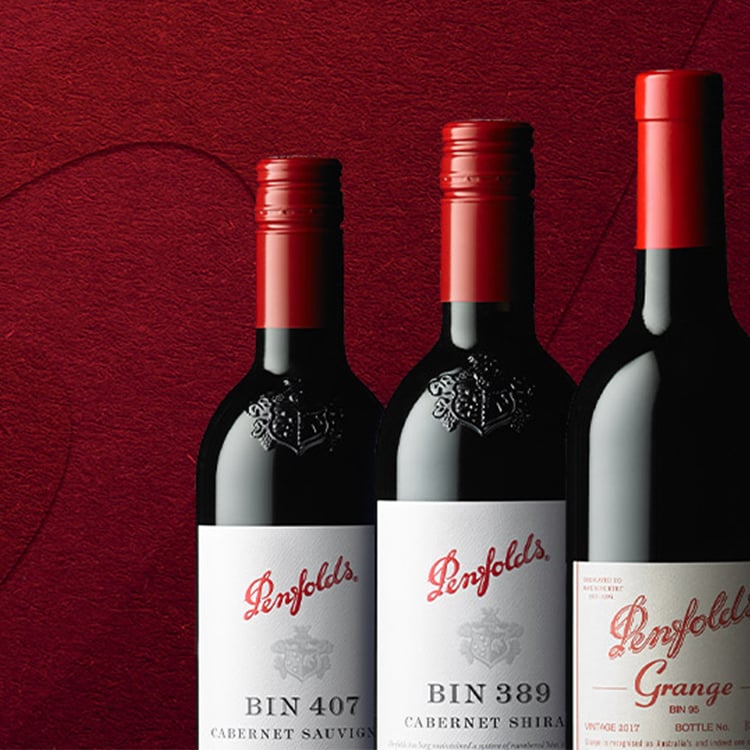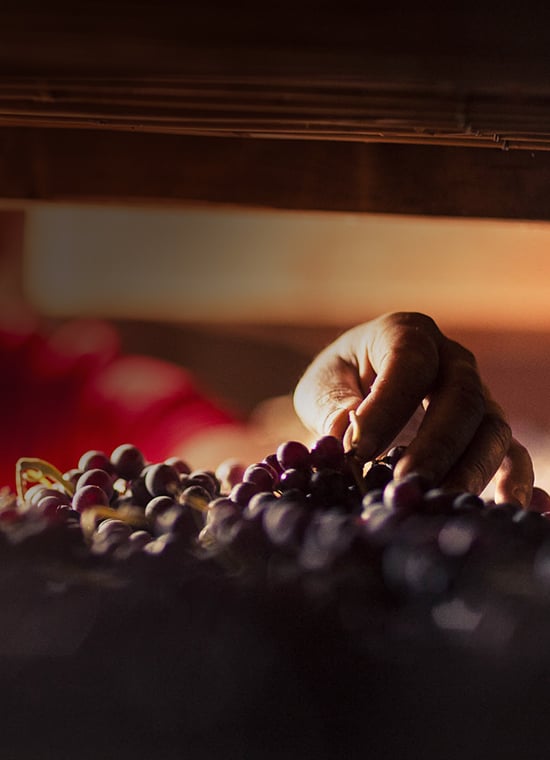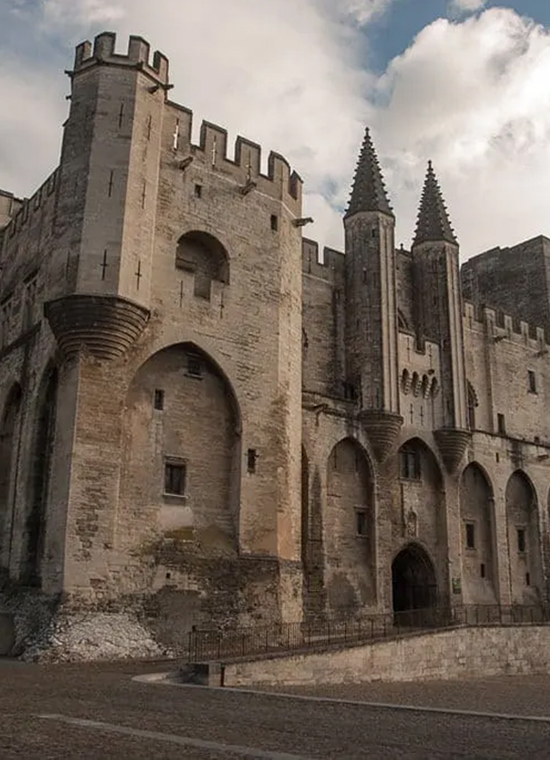An Italian term referring to the natural process of drying grapes off the vine, where grapes are harvested fresh and then partially dried before being vinified, Appassimento is a process that is almost as old as wine making itself, with records going back as far as the Ancient Romans.
In order to gather the healthiest selection, grapes are usually handpicked and carefully packed into small crates to avoid any damage or crushing and after picking, the grapes are laid out to dry horizontally on bamboo or plastic racks. They are laid out in a single layer, in large, naturally ventilated warehouses called ‘fruttaio’ during the winter months and remain there for 100 days or more. Ideal conditions involve good aeration coupled with mild temperatures which allows the grapes to gradually develop a more complex array of aromas and flavours.

During this process, the dehydrated grapes will lose 30% to 40% of their weight, and the loss of water results in concentrated sugar and flavour compounds, developing sweet or very concentrated wines, such as the traditional Recioto. However, grape drying is also regularly used for the production of dry wines, leaving them full-bodied, complex and relatively high in alcohol content. One example would be the Amarone, which is produced entirely from grapes that have been left to dry for a long period of time.
A mould known as botrytis is beneficial for contributing to the wine’s velvety and smooth texture, as well as its distinctly spicy notes. Depending on the grape variety, intended wine style and the specific microclimatic conditions under which the appassimento process happens, the duration of the drying process will differ, ranging between three to four months for Amarone, and up to six months for Recioto.

Best known as the birthplace of the legendary Amarone, Valpolicella is home to millennia of viticultural history. Translating aptly to the “valley of many cellars”, Valpolicella lies in the north-east of Italy, in the foothills of the Alps, featuring calcareous, limestone and clay-rich soils, with hills more than 1300 feet above sea level. The region is revered for its diverse red wines, spanning from dry, epic Amarone to the sweet Recioto, as well as the spicy cherry charms of Valpolicella Ripasso and lively, accessible Valpolicella.
Climate
Valpolicella’s cool and continental climate is critical to the success of its wine. With the Alps to the north and sloping valleys to the south, the region is sheltered against the intensity of the Mediterranean summer, and the prevailing winds create microclimates of sorts throughout the region.
Grape Varietals
The four distinct styles of Valpolicella wine owe their presence to four main indigenous grape varieties: Corvina, Rondinella, Corvinone, and Molinara. By law, Valpolicella DOC wines must comprise 45-95% Corvina, and Corvinone can substitute up to 50% of the quote for it, bringing round, cherry flavours. Rondinella offers lush floral notes, and must make up 5% to 30% of the blend. Though it is no longer a compulsory addition, many wine-makers choose to blend Molinara into the final product as it provides lean acidity. These varietal blends result in wines that are bright, lively, and balanced with savoury sour cherry flavours.

Valpolicella is the ‘umbrella’ term for the 5 different DOC/G wines that can be produced from the same vineyard using the same grape varieties, allowing it to speak to different palette preferences and at different price points.
Valpolicella Classico
Everyday Valpolicella wine is a simple and underrated red wine, leaning towards the lighter end of the spectrum, with bright, tangy fruity aromas of blueberries and banana, and the distinctive "sour cherry" flavour commonly found in many other northern Italian reds. It is enjoyable at both room temperature and slightly chilled, making it ideal as a refreshing choice for warm summer afternoons.
Valpolicella Superiore
Known for its darker ruby colour and rich fruity flavours of cherries, plums, pansy and spices with hints of black pepper and vanilla, these wines are aged in wood for at least a year to develop and achieve the perfect harmony between acidity, body and tannin.
Recioto della Valpolicella
Made from dried (passito) grapes in the Veneto region of north-eastern Italy, Recioto della Valpolicella is an intensely flavoured, sweet red wine that contains good acidity and a toothsome mouthfeel. Considered to be one of the region’s most idiosyncratic wines, it was later adapted to produce the region's famous Amarone wines – a drier, higher-alcohol version of sweet Recioto.
The appassimento method is used in the production of the Recioto. Once the drying process is completed, the grapes are gently pressed and fermented until it reaches the desired balance of alcoholic strength and sweetness, and then aged in oak barrels for a minimum of two years.
Amarone della Valpolicella
In comparison, the Amarone is a full-bodied, dry red wine with concentrated flavours, of candied strawberry, prunes, raisins, cinnamon spice and dark chocolate. Translating to “great bitter,” Amarone is made by allowing half-raisined (passito) grapes to fully ferment.
According to the legend, Amarone had emerged in the 1930s as a “mistake” when cellar master, Adelino Lecchese, discovered a barrel of Recioto he had forgotten in a corner of the cellar. Despite his initial fear that the wine would have turned bitter and undrinkable, the fermentation processed out all the natural sugars and resulted in a high alcohol yet complex dry wine. The surrounding community appreciated and adopted this style quickly, and was officially marketed broadly by the mid 1950s.
Similar to other bold, high-alcohol Italian wines, the Amarone is revered in Italy for its long-lasting quality. Aged for a minimum of two years for Amarone and four years for Amarone Riserva, these wines have enough structure and richness to mature in the bottle for five to ten years as well.
Since the 2010 vintage, Amarone della Valpolicella has obtained the DOCG certification, the highest mark of control and quality for Italian wines. Its registered trademarked name is protected by international laws, and wineries have to adhere to a series of specific rules that establish every single aspect of production, as well as having the vineyards within the boundaries of the area designated for the production of Valpolicella.
Valpolicella Ripasso
Made by fermenting standard Valpolicella wine with grape skins left over from the production of Amarone, Ripasso, which means “re-pass” or second fermentation, is a double-processed method of winemaking. The discarded processed grape skins still contain high levels of flavour, tannin, and character, and mixing them with fresh, undried grapes creates Valpolicella Ripasso. The result is a combination of the sour cherry notes in a standard Valpolicella and the soft, bitter, raisined fruit flavours of Amarone and Recioto, and the Valpolicella Ripasso is a more accessible, fruit-driven, medium-bodied dry red wine at a lower price point.
Valpolicella Ripasso wines require ageing in oak barrels and then in its bottles for at least two years before it’s ready for release. The oxidative ageing process in the oak barrels adds a degree of complexity which many wine lovers find appealing. Tannins present are broken down, giving the wine a softer and more velvety feel, and contributes flavours such as vanilla, black pepper spice, espresso and dark chocolate as well. Concurrently, the red berries flavours present transform into tastes of dried or candied fruits.

Revered as the godfather of Amarone, Giuseppe Quintarelli is known to be one of the best wineries in the world and the best in the Valpolicella wine region.
Established in the 1950s located in Cerè near the village of Negrar in the hills north of Verona, Giuseppe Quintarelli extended the winery on land purchased by his father and brought along improvements in vine growing and winemaking. He was bold in experimenting despite having to work within the region’s traditions as well.
Quality is of priority at Quintarelli. The Quintarelli name is a stamp of authenticity and the ultimate indication of artisanal wine of the highest quality. From the beautifully handwritten labels, to the best quality cork, the wines are treated with respect and patience, allowing it to develop gracefully in large casks to its maximum potential before it is bottled. Each release is a masterpiece and incomparable to wine in any other in the region or the world, a true testament to the skill and passion of a master artisan who was a perfectionist in every way.
Sustainable vine growing is at the core what they do with the avoidance of herbicides, and the sheer artistry and depth of their wines are truly exceptional, many produced using the appassimento technique. There can be great trust in the brand’s quality, as the winery value for quality means that there is no hesitation in passing up short-term profit if the quality is not up to standard. This is the case in 2005, where it was a difficult year with a lot of hail, and as a result, there is no 2005 vintage for their Amarone.
Today, Giuseppe’s daughter Fiorenza, his son-in-law Giampaolo, and his grandsons Francesco and Lorenzo are all keeping a close watch over the family’s legacy, and the estate continues to craft one of the world’s finest wines.

Brand Highlight: Fratelli Degani
The Fratelli Degani winery dates back to 1900, and wines made were initially just for personal use. However, in 1980, Angelo Degani and his nephew, Aldo took over the business, and their wines were featured on many of the world’s most prestigious wine lists by 1996.
They amaze us by regularly turning out great results, vintage after vintage. Wines of high quality and lashings of personality." Gambero Rosso, one of the major wine publications in Italy
Located in Valgatara in the heart of the Valpolicella Classico region, brothers Aldo and Luca Degani are a generation of growers running a small, dynamic winery in their simple cellar. The Degani brothers own 6 hectares of vineyards in Marano and Fumane, in the heart of the Classico region, which was re-planted over 25 years ago. The vineyards are between 150-180 metres above sea level, with rows running north-south for maximum sun exposure. La Rosta is a special part of the vineyard holdings, which provides even riper grapes in top vintages.

From harvesting to winemaking and bottling, everything at Degani is done in accordance with traditional methods and a simple ideology. After a century of slow, constant and natural refinement, this tradition is what has shaped the wines produced today. More than just fermented grapes in a glass, passion, history and culture is inherently present. The winery produces only 5 wines; approximately 40,000 bottles annually, perfectly reflecting the world-class terroir and a history of intricate wine making skills, prevalent in everything from their incredible Valpolicella right through to their incredible Amarone.
Today, the wines made by Fratelli Degani truly show the magic of the Valpolicella region and perfectly encapsulate the quintessential taste of Italy.

Brand Highlight: Buglioni
The Buglioni family has been making wine since 1993, a result of the purchase of an old farmhouse property, which came with a 4 hectares vineyard planted to the local red varieties Corvina, Corvinone, Molinara and Rondinella.
Initially, each vintage produced was merely meant to be something shared and enjoyed amongst family, friends and collaborators. However, as their vision and passion grew, Alfredo E Mariano Buglioni opted for a unique method in getting his wines out to the public by converting a family boutique in downtown Verona into a wine bar, quickly gaining popularity amongst wine-loving locals and tourists.
Wine is more of a passion for us. You have to follow nature, and you must touch everything” Mariano Buglioni

Today, the Buglioni vineyards have increased to nearly 54 hectares in Valpolicella Classico, and have also begun farming organically. With meticulous vine pruning methods and the utilisation of scrupulous control techniques combined with lightly textured, gravelly, dark alluvial soil, the estate ensures the production of high-quality grapes for the production of its wines.
With their reds as the stars, Buglioni bottles and sells nearly 280,00 bottles a year to Europe, the United States and Asia, and roughly half the production is sold in bulk to other famous and established wineries. Looking back over the past 29 years, Buglioni has evolved from a passion project into a sophisticated wine producer.
READ MORE HERE
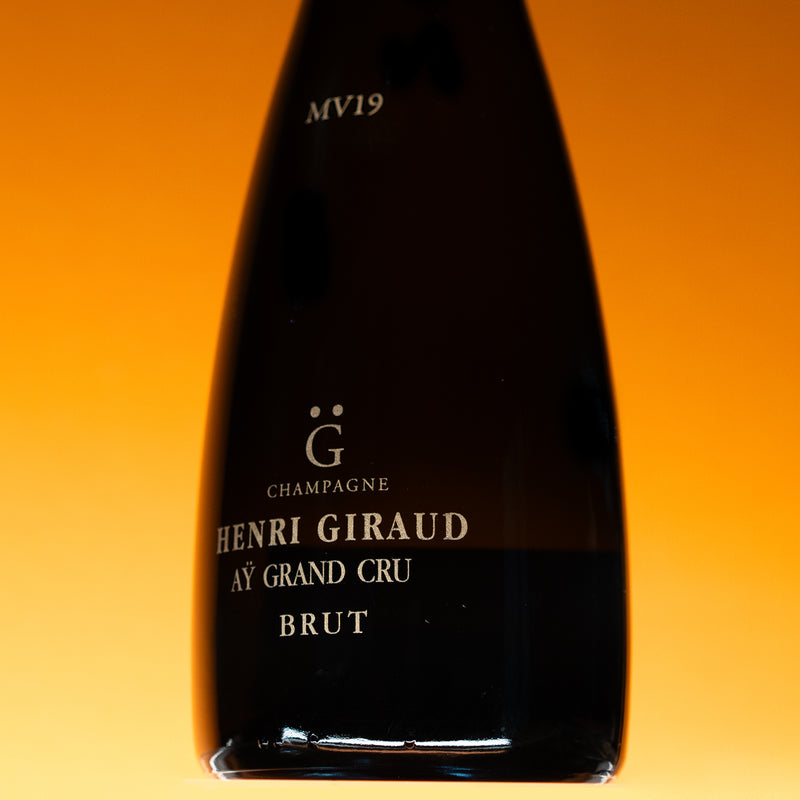
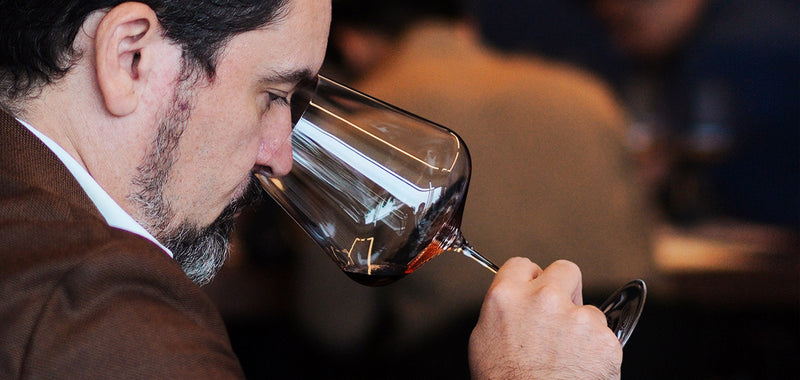
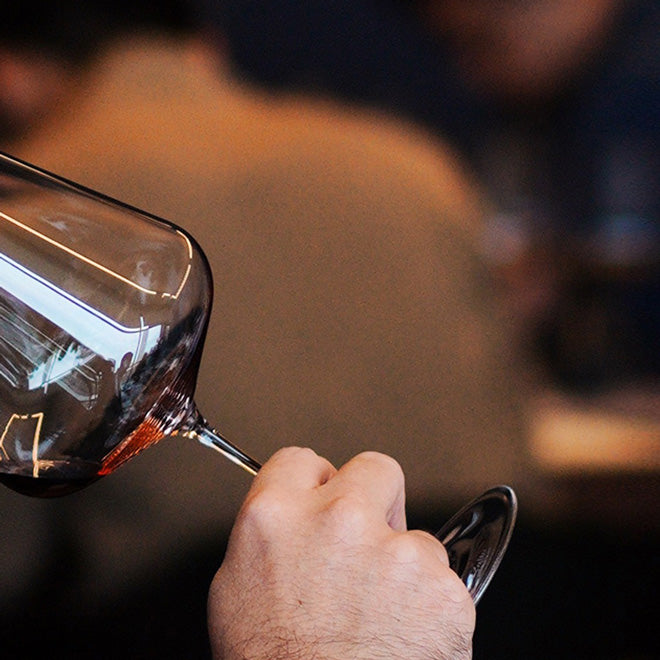
.jpg?v=1730428338702)
